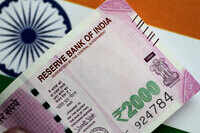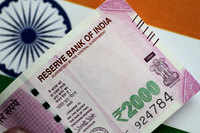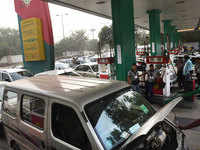Opec to cut output, government may face heat before 2019 polls
TNN | Dec 8, 2018, 03:08 ISTHighlights
- For India, which imports over 80% of its oil, Opec’s member countries account for 82% of crude, 75% of natural gas and 97% of LPG supplies
- Oil prices had tumbled 30% in just eight weeks since October 1 and helped bring down fuel prices by over 10%
 Image used for representative purpose
Image used for representative purposeNEW DELHI: Opec, the grouping of 14 major oil exporting countries that accounts for 40% of global supplies, on Friday stitched a deal to throttle output by 1.2 million barrels per day (bpd), or a quarter of India’s daily consumption.
But several imponderables such as the fault lines within Opec, rising exports from the US and the level of compliance by Russia — the non-Opec producer wielding considerable influence over the global oil market — are expected to moderate the pinch.
The deal will be reviewed in April. Global oil prices jumped 4% on the news. A clearer picture will emerge when the market opens on Monday and more details are known.
For India, which imports over 80% of its oil, Opec’s member countries account for 82% of crude, 75% of natural gas and 97% of LPG supplies. The production cut ahead of the general election is bound to put the government’s political management skills to test. Oil prices had tumbled 30% in just eight weeks since October 1 and helped bring down fuel prices by over 10%. This gave the government a breather through key state polls that concluded on Friday.
The relief came after a prolonged spell of record fuel prices in the August-September period, the government to announce relief on October 4 by cutting excise duty by Rs 1.50 a litre and asking state-run fuel retailers to absorb another Re 1. Any reversal in the price trend at this point is bound to mount pressure on the government for another round of excise cut.
Between November 12, 2014 and January 31, 2016 the government had raised excise duty on petrol nine times aggregating Rs 9.94 a litre and Rs 11.71 on diesel. So far it has pared the duty twice, aggregating a reduction of Rs 3.50.
Higher fuel prices in the last quarter of the 2018-19 financial year will bring back pressure on government finance and limit the Centre’s social spending abilities when it is set to go back to people for another mandate. It will also put the rupee under renewed pressure by widening the current account deficit, which will have a cascading impact.
But several imponderables such as the fault lines within Opec, rising exports from the US and the level of compliance by Russia — the non-Opec producer wielding considerable influence over the global oil market — are expected to moderate the pinch.
The deal will be reviewed in April. Global oil prices jumped 4% on the news. A clearer picture will emerge when the market opens on Monday and more details are known.
For India, which imports over 80% of its oil, Opec’s member countries account for 82% of crude, 75% of natural gas and 97% of LPG supplies. The production cut ahead of the general election is bound to put the government’s political management skills to test. Oil prices had tumbled 30% in just eight weeks since October 1 and helped bring down fuel prices by over 10%. This gave the government a breather through key state polls that concluded on Friday.
The relief came after a prolonged spell of record fuel prices in the August-September period, the government to announce relief on October 4 by cutting excise duty by Rs 1.50 a litre and asking state-run fuel retailers to absorb another Re 1. Any reversal in the price trend at this point is bound to mount pressure on the government for another round of excise cut.
Between November 12, 2014 and January 31, 2016 the government had raised excise duty on petrol nine times aggregating Rs 9.94 a litre and Rs 11.71 on diesel. So far it has pared the duty twice, aggregating a reduction of Rs 3.50.
Higher fuel prices in the last quarter of the 2018-19 financial year will bring back pressure on government finance and limit the Centre’s social spending abilities when it is set to go back to people for another mandate. It will also put the rupee under renewed pressure by widening the current account deficit, which will have a cascading impact.
Download The Times of India News App for Latest Business News.










































All Comments ()+^ Back to Top
Refrain from posting comments that are obscene, defamatory or inflammatory, and do not indulge in personal attacks, name calling or inciting hatred against any community. Help us delete comments that do not follow these guidelines by marking them offensive. Let's work together to keep the conversation civil.
HIDE